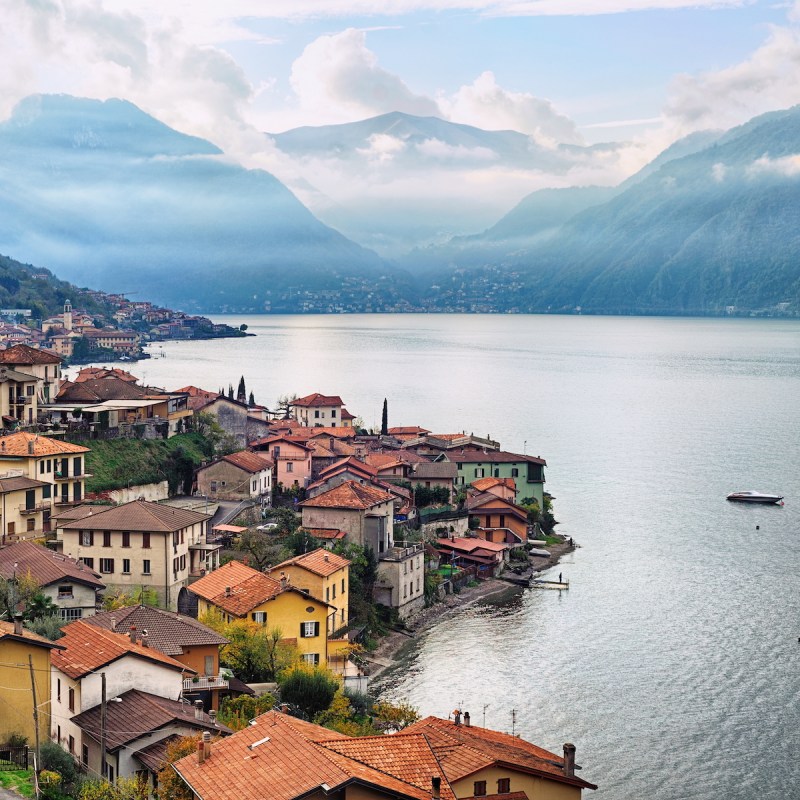
When you have Italy on your radar, you are spoiled for choice when it comes to superb places to visit. There are so many great coastal destinations, islands, and inner regions, not to mention the cities. And you can never see all of Italy in one visit; even if you lived there, you’d struggle.
Videos by TravelAwaits
So, decisions need to be taken and compromises need to be made in order to keep the itinerary do-able. When it comes to the north of Italy, there are two major cities that are on most people’s wish lists: Milan and Florence. Both are historic and filled with gorgeous architecture, museums, and Italian lifestyle. But which one to include in your trip?
Here are some key differences that might make your decision a little easier.

1. Location
Milan Is Close To The Alps
Milan is located in the northern region of Lombardy, making it a gateway to the Italian Alps with its snow-capped mountains on the city’s horizon. Some days, they look so close that you think you can touch them, but in reality, the foothills of the Alps are some 150 miles away. Genoa, on the Mediterranean Coast, is less than 90 miles from Milan, while the Swiss border lies less than 50 miles away.
Florence Lies In Tuscany
I am sure I had you at “Tuscany,” right? What’s not to love about Tuscany? Florence is Tuscany’s capital city and the stunning Tuscan countryside with its rolling hills, sunflower fields and cutesy villages starts where Florence ends. Florence is also, while still relatively north within Italy, much more centrally located, making explorations further south much easier.

2. Size And Getting Around
Milan Is Italy’s Second-Largest City
Milan is Italy’s second-largest city by size and population with around 1.5 million inhabitants living in Milan proper. To see the various sights, from the canals of Navigli to the modern Tre Tori, there is a great network of metros and trams that are easy to navigate and cheap to use. Getting a 1-, 2-, or 3-day pass has you covered for a handful of euros. That said, the inner city — which has all the main sights, even down to Navigli — is walkable. But it is fun to travel on the trams, from beautifully historic and rickety to super modern, all acting as a bit of a tourist bus for less money and without the commentary.
Florence Is Perfect To Explore On Foot
With barely 500,000 inhabitants and a well-defined city center, as long as you are staying centrally in Florence, it’s all about exploring on foot. There’s absolutely no need for public transportation. That said, when it gets warm or your knees are getting travel-worn, you can hop on buses 12 and 13 from the city center to get up to Piazzale Michelangelo overlooking Florence from its lofty position.

3. The Weather
Milan Is Subtropical
Despite being close to the Alps, Milan has a typical subtropical climate with cooler — but not snowy — winters and hot summers. Average temperatures in winter are between 32 degrees and 50 degrees Fahrenheit with plenty of rain, while in summer, temperatures can reach 95 degrees with a fair share of humidity. The nicest seasons to travel, for the weather as well as the crowds, are late spring and early fall, which are both pleasant, if occasionally interrupted by the odd rain shower.
Florence Has A Mediterranean Climate
Despite the two cities having a very different definition of their individual climate, on paper, it looks pretty much the same. Florence’s winters are cool and damp, with temperatures down to around 41 degrees, while summer temperatures can reach 95 degrees or higher but without the humidity. The air is drier, making it easier to cope with. That said, Florence is busier and that makes summer even worse. So, like with Milan, aim for late spring or early fall and take a light rain jacket just in case.

4. Attractions
Milan Has Superb Old And New Architecture
Milan is known for its impressive architectural landmarks, such as the iconic Duomo (the Milan Cathedral), its neighboring Galleria Vittorio Emanuele II, and the historic Sforza Castle. The city is also known for its art galleries and museums, and is home to gems such as the famous painting of The Last Supper by Leonardo da Vinci. For this, you need to be extremely organized because tickets are usually sold out 3 months in advance. Don’t miss another da Vinci gem — the hidden vineyard he once owned. But rather than being filled with point-to-point sightseeing, Milan is very much a city to amble and discover slowly.
Florence Is Bursting With History
While Florence also invites you to idle in cafés, there is so much history all around that you’ll barely find the time to relax. Main attractions include another Duomo, the Florence Cathedral, the Uffizi Gallery, the Ponte Vecchio Bridge, and the Pitti Palace — with the entire historic center designated a UNESCO World Heritage Site.

5. Eating And Drinking
Milan Has Saffron Risotto
Probably the best-known and most typical Milanese dish is risotto alla Milanese — a yellow, saffron-spiced risotto that may look a little bland but is extremely tasty. The Milan dining scene ranges from luxury to happy-go-lucky terrace-hopping with plenty of great places to try. And, did you know that the Christmas cake Panettone originally comes from Milan? Head straight to the historic Pasticceria Marchesi on Corso Magenta to try the best.
Florence Has Great Meat-Based Dishes
Florence has the hearty Tuscan cuisine on offer, with my personal favorite being pappardelle al cinghiale — ribbon pasta with wild boar ragu. Other typical Florentine dishes include bistecca alla Fiorentina, grilled T-bone steak, ribollita (a hearty vegetable soup), and pappa al pomodoro (a tomato and bread soup). There are also plenty of gorgeous restaurants where you can try them all.

6. Day And Road Trips
Milan Is The Gateway To Various Other Countries
Both cities, and indeed the entire country, are perfect for road trips. Milan is close to countries such as Switzerland, France, and the tiny countries of Monaco and Liechtenstein. There are closer-by attractions, such as the stunning Lake Como and Turin, while a trip to Venice is also a good option from here.
Florence Has Tuscany
Tuscan road trip anyone? There are so many options for day trips from Florence that it is difficult to know what to recommend. But basically, when visiting Florence, you ought to concentrate on the delights Tuscany has to offer. Spend a night in Pisa or a weekend in Siena and stop for a while in the Chianti wine region.

7. Festivals And Special Events
Milan Does Fashion
Milan is famous for being one of the world’s leading fashion capitals and Milan Fashion Week is a major twice-yearly highlight. Every spring, Milan fills with the fashionistas of the world for the fall/winter collections and in fall for the spring/summer collections. Please check the website for individual dates. This is great news if you are interested in fashion, love spotting the various get-ups of the world’s glitterati, and want to do some celebrity spotting. But if you’re not into all of that, try to avoid those dates. Hotel rooms are booked out or over-priced, certain popular venues are packed or closed to the public, and restaurants charge extra for the privilege of a terrace table. But, on the other hand, being a fashion capital makes shopping rather great in Milan.
Florence Is Spectacular For Festivals
Florence does not have one huge event like Fashion Week but instead pulls out the stops for traditional celebrations, such as Festa di San Giovanni — the “Festival of St. John” — celebrated on June 24. Florence honors the saint’s day with a series of events including a historic parade, a fireworks display over the River Arno, and cultural performances. Easter is also very special here with the Scoppio del Carro or the “Explosion of the Cart.” This is unique to Florence and takes place on Easter Sunday in Piazza del Duomo when a cart filled with fireworks is set off, followed by more fireworks and many celebrations.
Related Reading:
